|
|
|
|
|
|
|
The ActInSpace NZ competition to reimagine existing space technology and data into new applications was deemed a tremendous success by organisers, Centre for Space Science Technology (CSST). Nine teams made up of 42 people presented new space technology ideas after 24 hours of furious coding, planning, and pitching. There was also an amazing surprise for a team of secondary school students who entered the competition.
|
| MORE → |
|
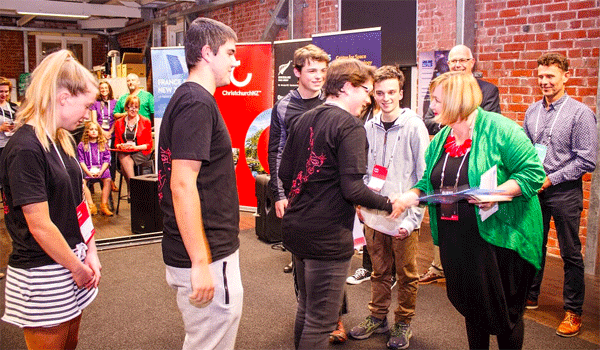 |
|
Team “Underage” collects second prize from Science Minister, the Hon. Megan Woods. Image: CSST. |
|
|
|
|
|
Robots that work alongside people in factories and unforgiving outdoors environments are an increasingly likely scenario. Lincoln Agritech is helping to create this reality and is taking part in Robotic Spearhead, a $2 million project funded by the Science for Technological Innovation National Science Challenge examining how next-generation robots can work with humans in a safe and flexible manner.
“We will advance the science required for a new generation of industrial robotic solutions,” says Lincoln Agritech Group Manager in Precision Agriculture, Dr Armin Werner.
“These robots can provide enormous benefits to the primary and manufacturing sectors. Both industries require fast adaptation to different products and markets, and constant responsiveness to changing outdoor environments.
“The robots can assist with complex tasks such as pruning tree or vine crops, safely felling trees on steep slopes, or assembling small batches of appliances on demand.”
MORE →
|
|
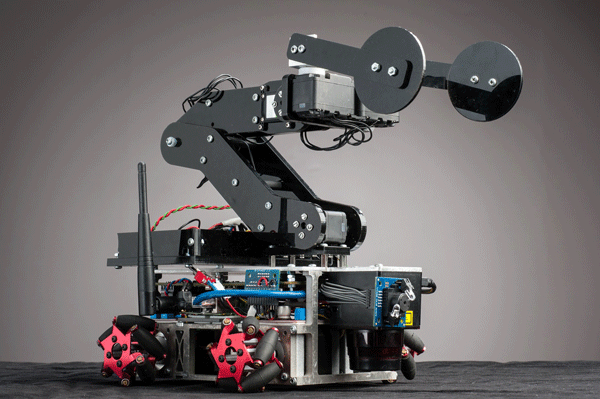 |
|
Robots that work alongside people in factories and unforgiving outdoors environments are an increasingly likely scenario. Photo: Victoria University. |
|
|
|
|
|
BRANZ has an extensive library of building research videos on YouTube. The latest offerings are The Building Envelope and WUFI. Stephen McNeil, BRANZ Materials Scientist, explains the complexities of the building envelope and different ways in which modelling software WUFI can be used; and Reference Buildings for Life Cycle Analysis. Dave Dowdell, BRANZ Principal Scientist Sustainability, outlines the environmental impacts of buildings and how reference buildings can be used via a simple App.
MORE →
|

|
|
|
|
|
|
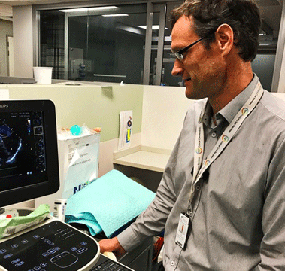
|
Research and intensive care specialist Dr Paul Young. Photo: MRINZ |
|
MRINZ intensive care specialist, Dr Paul Young, has featured in several newspaper and television stories this month, after a paper he co-authored said that liberal administration of oxygen increased the risk of in-hospital patient death by 21 per cent - an estimated one additional death for every 71 patients.
It has long been believed there is no such thing as too much oxygen for very ill patients, but the study, published in prestigious medical journal The Lancet, says otherwise.
Dr Young said the Medical Research Institute's findings proved, for the first time, there was such a thing as too much oxygen.
MORE →
|
|
|
|
|
|
IRANZ welcomes Malaghan Institute
IRANZ welcomes the Malaghan Institute of Medical Research. The Malaghan Institute has an international reputation as a leading independent biomedical research and training facility, contributing new scientific discoveries and innovative research to be applied for a whole range of human diseases. Their researchers believe the key to fighting disease lies in harnessing the immune system, the body’s own natural defence. Their pioneering research programmes focus on immunotherapy, gut immunology and cell biology to seek better treatments for diseases affecting people worldwide – including cancer, asthma and allergy, multiple sclerosis and infectious diseases.
Dr Rob Weinkove, clinical research fellow and clinical director of the CAR-T cell programme at the Malaghan Institute, recently featured on radioLIVE's Long Lunch with Wendyl Nissen to talk about CAR-T cell therapy and what it means for New Zealand.
In other news from the institute, in a New Zealand first, Hugh Green Flow Cytometry Fellow and head of research technology at the Malaghan Institute, Kylie Price, has become the first Kiwi to be elected to the International Society for the Advancement of Cytometry council.
|
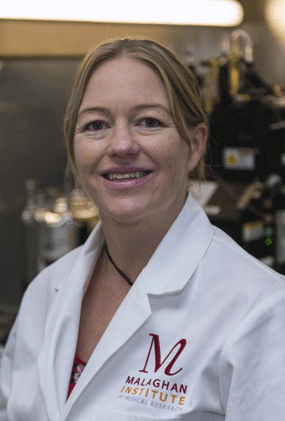
|
Kylie Price, head of technology at the Malaghan Institute of Medical Research. Photo: Malaghan Institute. |
|
|
|
|
|
|
A robust review of independent research organisations (IROs) receiving funding from the Health Research Council of New Zealand (HRC) has driven home the benefits of long-term stable investment in health research. The mid-term review that’s just taken place was part of a seven-year agreement between the HRC and four IROs. These are organisations that are recognised by the government for doing work that’s nationally significant and deserving of more stable backing. The IROs include IRANZ members the Malaghan Institute of Medical Research and the Medical Research Institute of New Zealand.
|
| MORE → |
|
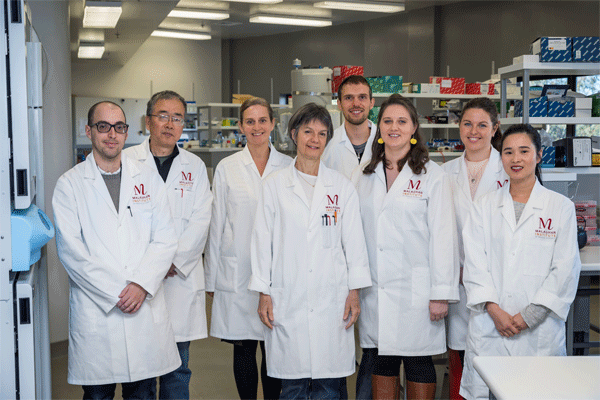 |
|
Malaghan Institute of Medical Research's partnerships with New Zealand biotech companies and commercial ventures continue to grow the country’s nascent pharmaceutical industry. Photo: Malaghan Institute of Medical Research. |
|
|
|
|
|
Cawthron Analytical Services are leading the way in the freshwater testing space by developing methods that deliver more accurate results with faster turnaround times.
“Environmental data is hugely important to local government and we’re seeing ever-greater demand for our laboratory services” says Catherine Moisan, Cawthron’s Natural Toxins Section Head. Because toxic algae present a public health risk and testing for freshwater toxins is complex, innovations that deliver results more quickly are well received.
MORE →
|

|
Cawthron is working with councils to ensure new freshwater algae monitoring services meet requirements. Photo: Cawthron. |
|
|
|
|
|
|

|
A summary of top results from the Welding Centre survey. Image: HERA. |
|
If you’re a user of HERA’s New Zealand Welding Centre (NZWC) you’ll have a good idea of the value of this service. HERA has done the sums and calculated that the industry levy from welding consumables gives a conservative return of investment of more than 24 times what is invested. In other words, for every industry levy dollar, $24 in value is created.
Manager Welding Centre Dr Michail Karpenko says the outcome was a conservatively estimated ratio, “The findings allow us to say with great confidence that investing in our activities directly and through the research levy pays industry back handsomely.”
MORE →
|
|
|
|
|
|
Dr Helen Rutter, Aqualinc’s South Island groundwater expert, says her team’s current research project has huge potential value in understanding the contribution of shallow groundwater to flooding and liquefaction potential.
Shallow groundwater is increasingly under scrutiny in urban areas. It plays a role in surface water flooding, as it can rise to the surface and contribute to flooding. Even when groundwater levels are close to, but not at the surface, the proximity of the water table to the ground surface limits the amount of water that can infiltrate. The Christchurch Earthquake sequence of 2010-2011 saw severe liquefaction - the process where sand and silt grains are rearranged and the water in the spaces between the grains is squeezed. The pressure causes silt and sand grains to float in the water, and the soil behaves more like a liquid than a solid. Again, shallow groundwater increases the potential for liquefaction to occur, and the severity of the liquefaction.
MORE →
|
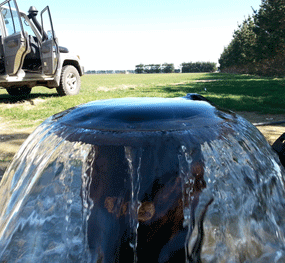
|
Shallow groundwater is increasingly under scrutiny in urban areas. It plays a role in surface water flooding, as it can rise to the surface and contribute to flooding. Photo: Aqualinc. |
|
|
|
|
|
|
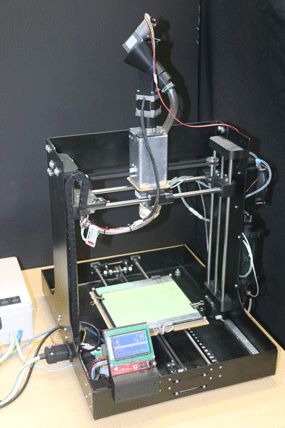
|
Polymer/metal pellet extrusion printer developed by TiDA and Massey University. Photo: TiDA. |
|
The global metal additive manufacturing (AM) market is developing at a furious pace, as costs come down and production speed increases. Metal 3D printing in the prototyping and ramp-up phases of product development is becoming increasingly common, and the transition from prototype through niche and into low volume production has become substantially easier. As AM technologies develop and proliferate it has become suited to the needs of a wider range of small-to-medium-enterprise companies in New Zealand.
As well as continuing research into titanium alloys and powder metallurgy, including high-end Selective Laser Melting (SLM) 3D printing, TiDA is supporting New Zealand industry’s understanding and appetite for new low-cost metal 3D printing AM technologies. The company recently partnered with Massey University in a project to modify a low-cost polymer-pellet printer to make prototype metal parts.
MORE →
|
|
|
|
|
|
As housing pressure mounts, new BRANZ research explores how New Zealand can better adapt to medium-density living. Population growth, demographic changes, lifestyle trends and a need for more affordable housing are all driving demand for a greater number of homes in New Zealand. Meeting this demand is a complex issue, but part of the problem can be addressed through widespread adoption of medium-density housing (MDH). In order to be successful, however, MDH requires public education and acceptance, updated planning and urban intensification rules, streamlined consenting processes and a building industry proficient in higher-density design and construction techniques.
|
| MORE → |
|
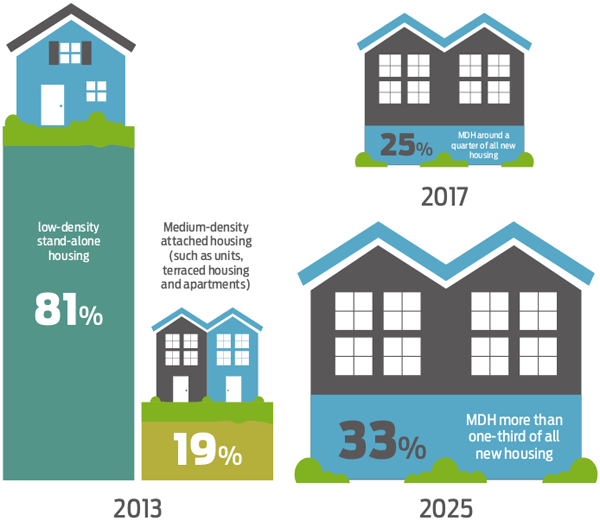 |
|
In 2013, low-density stand-alone housing made up 81% of the total occupied New Zealand housing stock. Medium-density attached housing, such as units, terraced housing and apartments, made up just 18% of occupied private dwellings. In contrast, in 2017 MDH made up roughly a quarter of new builds. That figure is expected to rise dramatically, with more than one-third of all new dwellings built in this country likely to be MDH by 2025. Unsurprisingly, more than half of these builds will be located in Auckland. Image: Branz build magazine. |
|
|
|
|
|

|
In the coming decades, more and more communities will be exposed to flooding and coastal erosion made worse by climate change. Photo: Dave Allen, NIWA. |
|
A report released by the Deep South National Science Challenge, Communities and climate change: Vulnerability to rising seas and more frequent flooding, highlights key gaps in our collective understanding about how climate change will impact New Zealand’s diverse communities. In the coming decades, more and more communities will be exposed to flooding and coastal erosion made worse by climate change.
Dr Suzi Kerr, Senior Fellow at Motu Economic and Public Policy Research and the leader of the Deep South Challenge’s Impacts and Implications programme said the report emerged out of a Deep South Challenge Dialogue, in which participants ranged from academics and scientists working in health, sustainability, hazard management and climate and environmental science, to representatives of iwi, migrant and local communities, and particular groups such as older New Zealanders. “The dialogue process creates conditions in which participants learn from one another, come to a common understanding, and innovate together . . . the issues are discussed honestly and in depth. Group discussion and thinking can progress and converge, rather than be subject to a polarised debate that solidifies existing views and positions.”
MORE →
|
|
|
|
|
|
Testing the effect of caffeine on shellfish isn't a typical science lesson for most Year 13 students. But for 150 Nelson secondary biology students, experiments on mussels have been on the menu at workshops at the Cawthron Aquaculture Park.
MORE →
|
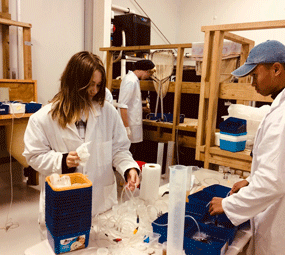
|
Jess Nicholson from Nayland College. Photo: Cawthron. |
|
|
|
|
|
|
Motu Senior Fellow, Dr Suzi Kerr has been appointed to the Interim Climate Change Committee. The Committee's goal is getting New Zealand down to net-zero emissions by 2050, with 100 per cent renewable electricity generation by 2035.
Dr Kerr is currently a Senior Fellow at Motu, a Principal Investigator in Te Punaha Matatini, a centre of research excellence focused on networks and complex systems, and an Adjunct Professor at Victoria University.
|
|
MORE →
|
|
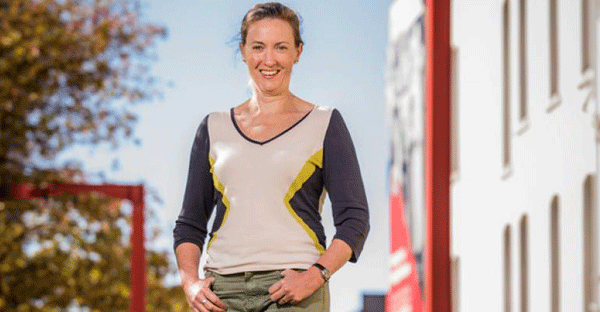 |
|
Motu Senior Fellow, Dr Suzi Kerr has been appointed to the Interim Climate Change Committee. Photo: Motu. |
|
|
|
|
|
The new Chief Executive of the New Zealand Institute for Minerals to Materials Research (NZIMMR), Tony Hogg, takes up the role this month after returning to his home in Greymouth. He will be working from Tai Poutini Polytechnic’s Greymouth campus, where the NZIMMR is based.
He says his first job will be visiting mines and discussing their research needs. He wants to find out what problems mining operators have and how NZIMMR can help fix them.
MORE →
|
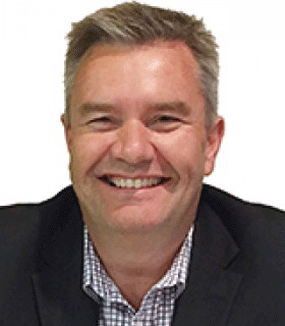
|
The new Chief Executive of the New Zealand Institute for Minerals to Materials Research (NZIMMR), Tony Hogg, takes up the role this month. Photo: NZIMMR. |
|
|
|
|
|
|
There is a new focus on health and safety for HERA. With a new CEO, Dr Troy Coyle, at the helm, the philosophy has become that health and safety should be seen as ‘the way things are done’, not ‘a task on a list’.
Comms manager Kim Nugent writes that a good safety culture in a business often dictates how engaged an employee is. It also works to attract, motivate and retain good workers as well. "Steps taken to embed safety into the culture of any business is varied – but what is clear, is that it must be led from the top."
MORE →
|

|
Safety in numbers - staff numbers that is. Photo: Hera.. |
|
|
|
|
|
|
|
|
WHO WE ARE
IRANZ is an association of independent research organisations. Its members undertake scientific research, development or technology transfer. Members include Aqualinc Research Ltd, BRANZ, Cawthron Institute, CRL Energy Ltd, Centre for Space Science Technology (CSST), Heavy Engineering Research Association (HERA), Leather & Shoe Research Association (LASRA), Lincoln Agritech Ltd, Malaghan Institute of Medical Research, Medical Research Institute of New Zealand (MRINZ), Motu Economic and Public Policy Research, Opus Research, Titanium Industry Development Association Ltd (TiDA Ltd) and Transport Engineering Research NZ Ltd (TERNZ).
|
|
Contact: Dr Rob Whitney, Executive Officer, mobile: +64 27 2921050, email: information@iranz.org.nz
|
| Copyright © iranz |
|
|
|
|
|